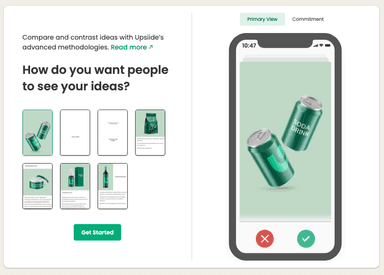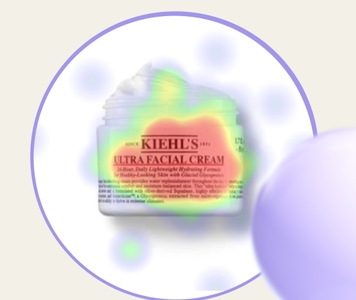After running thousands of surveys, we can confidently say that concept testing requires quite a bit of time and practice to get it right in the product development process.
Some brands do it well - they align internally on key goals of testing concepts and have the right systems to support the innovation process. Others, on the other hand, don’t have much experience testing ideas. And we’re not talking just about small brands and startups - well-established corporations have faced issues before new product launches too.
With this in mind, we created a list of best practices for concept testing and some tips for applying them.
Why is concept testing important?
Concept testing is one of the best methods in market research to quickly and efficiently evaluate the viability of your ideas. It helps brands assess how well a new product meets consumers’ needs and if they will buy it.
One of the greatest benefits of concept testing is that it can help predict the success of your new product ideas before you invest time and resources into building and launching them. It’s an important testing method that brands use to test and refine product ideas to reduce the risk of failure.
What are the best practices of concept testing?
1. Engage key stakeholders in the process
This practice is often overlooked by brands and this leads to quite a few problems further down the line. Say, for example, a product manager decided to test new product concepts but didn’t think to involve the brand’s salespeople, customer service team or marketers in the process.
This oversight might create problems from the start: the product manager might not be aware of the most pressing customer issues and end up coming up with product ideas that don’t solve those issues. And this might then lead to useless results, internal miscommunications and a less than ideal final product.
Upsiide’s hot tip: we always recommend that our clients bring their key decision-makers and team members into the process right from the beginning. Having these subject matter experts share their experiences and harness their knowledge will power internal brainstorming sessions. Not only will you have new concepts that align with customer needs, but you’ll also have a happy team that is aligned toward a common goal.
2. Keep the respondent experience in mind
When writing concept testing surveys it’s crucial to bear one thing in mind - keep your surveys simple.
Don’t use sophisticated sentences or special jargon - this might confuse respondents and affect their willingness to complete the survey. Ask your questions in the same way you’d ask them if you were speaking to a friend or colleague. That way, people like your potential customers will find it easier to answer questions and give the responses you’re searching for.
Speaking of simplicity, try to be specific about the scope of your survey so that it isn’t too long. One of the worst things you can do is to throw in questions “just in case you might need them”, because the more questions you add, the higher the chance that people will drop off or give you unconsidered responses.
Upsiide’s hot tip: we recommend that surveys shouldn’t take longer than 5-10 minutes and questions should be concise. This will make the respondents’ experience a good one, ensure they’re giving thoughtful answers and accurate data.
3. Think of how people communicate today
The world is changing every day, which means that traditional ways of answering survey questions need to evolve too. Your target customers communicate differently now (much thanks to social media!), and they’re usually completing surveys on mobile phones.
So your choice of a concept testing survey platform should reflect this change. When answering surveys on mobile, people want, and to some degree expect, dynamic and interesting experiences that will keep them engaged.
Upsiide’s hot tip: consider survey platforms that employ mobile-first methodologies. Upsiide’s idea screening methodology allows respondents to swipe left and right on ideas they like most, just like they would on a social media platform. This tool has helped brands to test product ideas, new features, packaging, messages and more in a mobile-optimized way. Our approach to idea screening can also be used for fully-fledged concepts - we’ve just reimagined the way those concepts are presented to the respondent.
4. Explore different ways of presenting ideas and concepts
Since people are looking for fun and engaging survey experiences, choosing a format that supports this kind of experience will help you increase the quality of your findings. And modern survey-making technologies can help you with that because they offer a variety of formats to test concepts. But the best platforms offer flexibility in the way you showcase your ideas.
If you want to assess a new package design, you’ll of course need to show respondents an image to react to. But being able to get creative about the way that image shows up for the respondent, whether or not they can zoom in or out to examine it, and which extra information appears alongside the packaging image is when things get interesting. Upsiide flexes to your unique testing needs, offering clients a ton of options when it comes to how a stimulus appears to the respondent.

Upsiide’s hot tip: If you’re evaluating several ideas in one test, we suggest sticking to one format per test. So, don’t present one product concept in a video and another in a photo. This decision might negatively impact the test results.
5. Just because a concept doesn’t perform well immediately doesn’t mean it isn’t worth further exploration
The beauty of concept testing is that it’s always an opportunity to learn and refine. Once you finish the concept evaluation process and identify your top-performing ideas, go back to the results and look at the ideas that didn’t do well. Think: is there a reason they didn’t perform as well? What would you change to make them more appealing? Are there any more innovative ideas you want to add to the test? Take a dig through the different demographic breakdowns; is there a specific subset of your respondents that the idea did do well with?
If you have answers to the questions above, consider tweaking your concepts a bit to test them again. You can then compare the results. Who knows, maybe you’ll get a better sense of your target market demographic, get some great actionable insights about a single concept, or even learn more about why your top-performing ideas were so popular.
Upsiide’s hot tip and a short story: ADVANCED, a producer of energy supplements, found great use in iterative testing. When they wanted to find the best packaging design for their new RTD product, they did 3 tests with Upsiide to get a sense of a creative direction, fine-tune the best ideas and see how they stand against giants like Monster and Red Bull. Even though this example is related to pack design testing, we think it shows the value of testing ideas several times. If ADVANCED’s team hadn’t performed tests iteratively, they wouldn’t have been able to regroup, re-align, and optimize for the things they really needed to find out.
Lessons learned
These best practices show that when concept testing is done right, it can drive your innovation process and align your team around one direction. If you want to learn more about concept testing and learn how to do it, check our other articles in the “Related content” section below.




